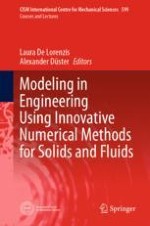The book examines innovative numerical methods for computational solid and fluid mechanics that can be used to model complex problems in engineering. It also presents innovative and promising simulation methods, including the fundamentals of these methods, as well as advanced topics and complex applications. Further, the book explores how numerical simulations can significantly reduce the number of time-consuming and expensive experiments required, and can support engineering decisions by providing data that would be very difficult, if not impossible, to obtain experimentally. It also includes chapters covering topics such as particle methods addressing particle-based materials and numerical methods that are based on discrete element formulations; fictitious domain methods; phase field models; computational fluid dynamics based on modern finite volume schemes; hybridizable discontinuous Galerkin methods; and non-intrusive coupling methods for structural models.
